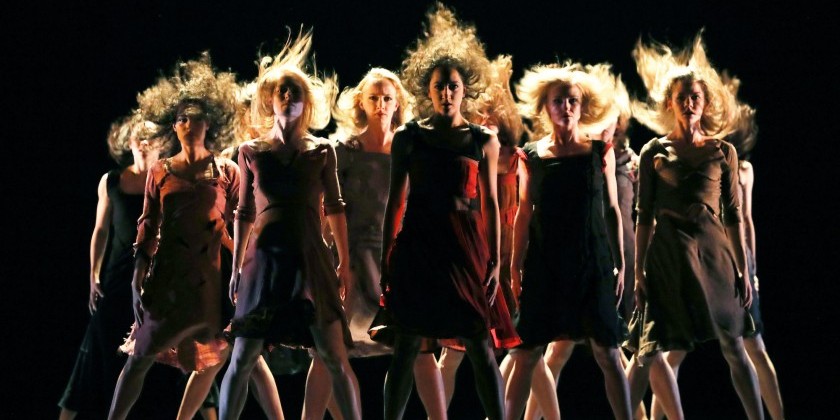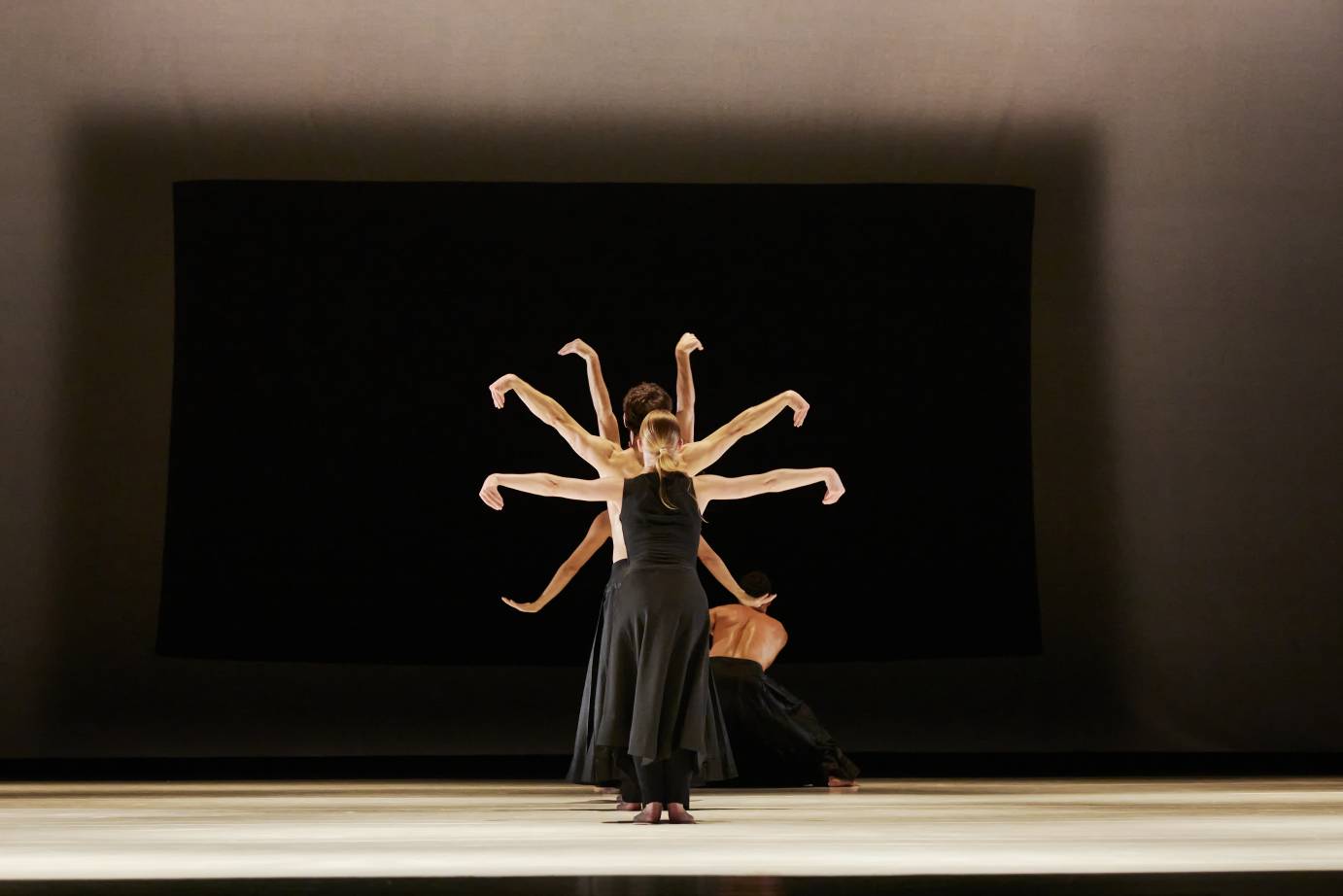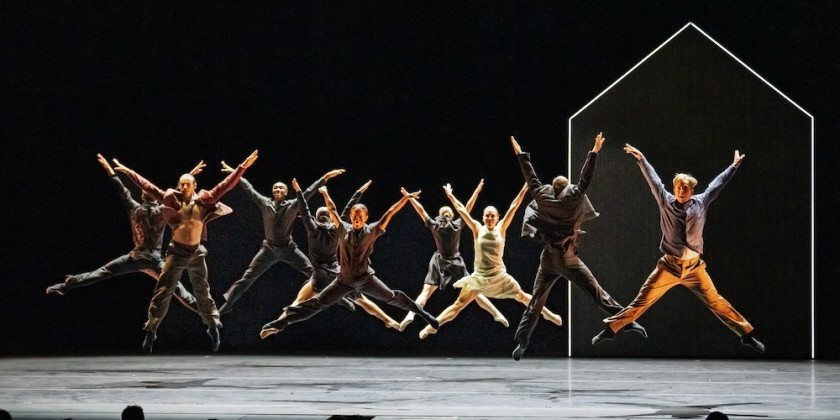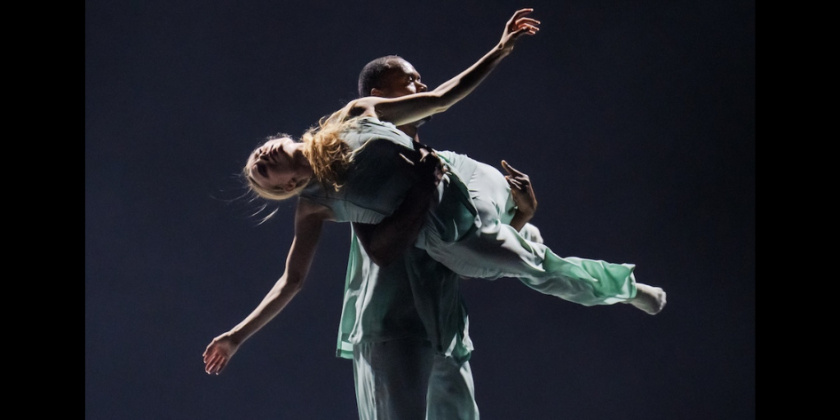IMPRESSIONS: Introdans Presents "Energy" at The Joyce Theater

Artistic Director: Roel Voorintholt
Managing Director: Marieke van ‘t Hoff
Ballet Masters: Jorge Pérez Martínez; Marlena Wolfe
Choreographers: Akram Khan, Lucinda Childs, Mauro Bigonzetti
Dancers: Ruben Ameling, Giuseppe Calabrese, Salvatore Castelli, Mark van Drunick, Fabio Falsetti, Yuma Funai, Merel Janssen, Brooke Newman, Elisa Rudolf, Jurriën Schobben, Alberto Tardanico, Federico Tosello, Vincenzo Turiano, Angelica Villalon, Demi Verheezen, Léa Visser, Nienke Wind
Date: June 12, 2024
Artistic Director Roel Voorinthalt wasn’t kidding when he titled his company’s return to The Joyce Theater after more than a decade Energy. High-octane and dynamic, Introdans thrills in athletic, razor-sharp works by Akram Khan, Lucinda Childs, and Mauro Bigonzetti.

Kaash, by British-Bengali choreographer Khan, bridges the worlds of contemporary dance and the Indian classical form Kathak. Meaning ‘what if’ in Hindi, Kaash draws inspiration from both the creative and destructive powers of the Hindu god Shiva. Kaash’s cast of five dancers are always in motion, traveling in taut geometric patterns that expand and contract across the stage. As the performers continually shift groupings, leaving and joining one another in intricate, rhythmic, and fast-paced choreography, there is always one figure left in serene stillness facing a large black square projected on the upstage wall. This square, designed by visual artist Anish Kapoor, signifies both the beginning of everything and the return to nothing. Dancers pause to contemplate it before returning to the group in choreography that is sometimes aggressive and at others restorative.
Arms slice the air at such exacting angles that, despite their speed, audiences are able to register precise shapes and lines. The detailed hand and wrist positions of Kathak dance emerge crystal clear in the cyclone of movement. When the dancers move together, not one step is out of sync, the positions of their arms and legs hardly a hair off from each other. The effect is spellbinding.
%20HR_Dancers%20Giuseppe%20Calabrese%2C%20Salvatore%20Castelli%2C%20Nienke%20Wind.jpg)
Equally mesmerizing is Khan’s craftmanship. The groupings on stage shift seamlessly from duets to trios to quartets in asymmetrical patterns, directing the audiences’ eyes to varying points on the stage. These transitions are quick, but rather than being overwhelming, they have a pleasantly hypnotic effect. Movement phrases accumulate and recede like waves. Sudden arrests punctuate and provide a restful moment in a sea of activity. Masterful movers, performers Salvatore Castelli, Giuseppe Calabrese, Angelica Villalon, Alberto Tardanico and Nienke Wind ooze, toss, flick, suspend and punch, meeting Kaash's assorted qualitative demands with ease.
Lucinda Childs' Concerto features a similar kaleidoscopic shifting of dancers, but her groupings are more linear and symmetrical, as is her movement vocabulary. Utilizing relatively simple ballet steps—sauté arabesques and crisp chaine turns, Childs creates a ceaseless whirlwind of bodies across the stage. Dancers travel in diagonal lines that pass through each other, performing the same phrase in opposite directions. With small variations and shifts, the seven performers are in constant motion, continually changing formation with mathematical exactitude. The driving music by Henryk Mikolaj Górecki, reminiscent of Miss Gulch racing along on her bicycle in The Wizard of Oz, is as relentless as the choreography, which is full of sprightly jumps and buoyant footwork. Although highly athletic, Concerto’s overall effect is calming, the dancers riding wave after wave of movement with serenity.
%20HR_Dancers%20Diego%20Benito%20Gutierrez%2C%20Ross%20Martinson%2C%20Ve%CC%81rine%20Bouwman.jpg)
In an evening of captivating choreography, Mauro Bigonzetti's Cantata manages to stand out. Quite different in tone from the preceding works, Cantata is passionate, rugged and visceral, evoking the vibrancy of Southern Italian culture. The score, inspired by traditional Italian music from the 18th and 19th centuries, accompanies the dancers with the sounds of frame drums and a button accordion. Through movements that are grounded, full-bodied and marked by controlled abandon, Bigonzetti takes audiences on a wild ride of seduction, passion, discord, jealousy, and celebration as he explores the drama of human relationships and the battle between the sexes.
_Dancers%20Alexis%20Geddes%2C%20Nienke%20Wind%2C%20Jamy%20Schinkelshoek%2C%20Kim%20van%20der%20Put%2C%20Elena%20Pampoulova%2C%20Vivian%20Sauerbreij%2C%20Brooke%20Newman.jpg)
With an exhilarating mix of strength and abandon, men and women sometimes toss each other like ragdolls. Torsos fling and shake wildly. Legs fly out in all directions. Performers push with aggression only to pull each other into tender embraces moments later. The audience, encouraged by the performers to join their fun, giggle, smile, and claps along during a spirited dance party. Later, one of the dancers speaks directly to us, describing someone in their group who smells like anchovies. In the end, the cast of seventeen, smushed together in a line, takes a deep breath and blows us a kiss before returning to their party, all discord forgotten — a perfect ending to an explosive, intoxicating event.
%20HR_Dancers%20Giuseppe%20Calabrese%2C%20Salvatore%20Castelli%2C%20Nienke%20Wind.jpg)












